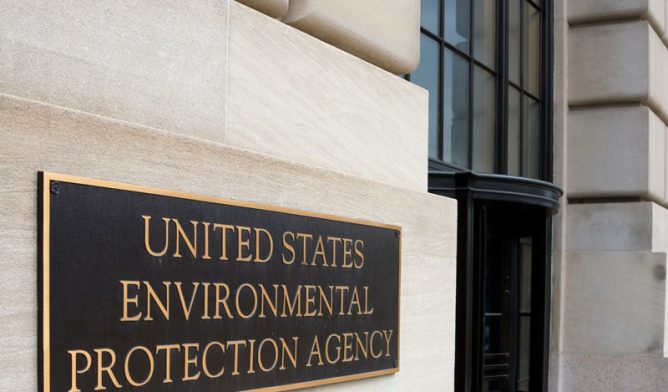Health Experts Criticize EPA’s Asbestos Draft Risk Evaluation
Asbestos Exposure & BansWritten by Tim Povtak | Edited By Walter Pacheco

Doctors, scientists and occupational health experts from across the country are openly criticizing the U.S. Environmental Protection Agency’s recent asbestos draft risk evaluation.
At a virtual press conference arranged by the Asbestos Disease Awareness Organization last week, speakers labeled the asbestos evaluation inadequate and in need of serious revision.
The year-long evaluation was required as part of the Frank R. Lautenberg Chemical Safety for the 21st Century Act, which was passed in 2016. It amended the original Toxic Substances Control Act, the country’s primary chemicals management law.
“I am concerned that the draft has serious omissions and does not reflect the full magnitude of the dangers of asbestos exposure,” said Dr. Jacqueline Moline, a specialist in occupational and environmental medicine at Hofstra University/Northwell Health in New York.
The EPA’s Science Advisory Committee on Chemicals will review the draft during meetings June 8-11. It is the next step toward the final risk evaluation of asbestos, the ninth of the first 10 substances and chemicals to undergo increased scrutiny as part of the amended TSCA.
The EPA will then have the option of proposing regulations to further prohibit or limit the use, manufacture, processing or distribution of the toxic mineral. It also could recommend an outright ban of asbestos.
The Science Advisory Committee on Chemicals review was originally scheduled for April 27-30, but was delayed by the all-consuming COVID-19 pandemic.
A panel of experts at the press conference filed recommendations to the EPA as part of the public input that will be a component of the review.
“The agency’s draft risk evaluation is incomplete, and its assumptions inappropriate,” said Dr. Celeste Monforton, a professor at Texas State University and member of the American Public Health Association.
EPA Finds Asbestos Products Pose Unreasonable Risk
The EPA’s original draft risk evaluation, which was completed in March, looked at 33 conditions of asbestos use.
It found “unreasonable risk to workers, occupational non-users, consumers and bystanders” in the limited number of asbestos products still being imported and used today.
The draft cited asbestos diaphragms in the chloralkali industry, asbestos brake blocks in the oil industry, asbestos-containing sheet gaskets in chemical production, asbestos-containing brake linings in the automobile aftermarket, automobile friction products and commercial use of asbestos-containing gaskets.
“I’m delighted that the EPA has found most of the conditions of use present an unreasonable risk,” said Brent Kynoch, managing director of the Environmental Information Association in Chevy Chase, Maryland. “Amazing, because the EPA did everything possible in the development of the risk evaluation to underestimate and downplay the risk of exposure. But numbers don’t lie. Asbestos is a killer.”
Critics Find Flaws in EPA’s Asbestos Evaluation
Consensus criticism of the EPA’s risk evaluation draft centered around five points:
- Legacy asbestos, used in residential and commercial construction before the 1980s, is the biggest risk to public health today, but it was not an integral part of the draft evaluation.
- Asbestos-contaminated talc, which has been found in several consumer products recently, also was not part of the draft evaluation, but has become a controversial topic legally.
- Mesothelioma and lung cancer — the two best-known malignancies caused by asbestos — were examined, but other cancers such as ovarian and kidney cancer were not. Also death rates, but not incidence rates, were factored into the risks.
- Chrysotile asbestos — the most common type of asbestos and the only one still being imported — was examined. Less common types such as Libby amphibole, often found in legacy asbestos, were not reviewed.
- The EPA found no risk to the environment for all conditions of use that were examined, but critics believe those were badly underestimated.
“At the end of the day, the EPA risk evaluation didn’t go far enough,” said Dr. Arthur Frank, professor of public health and medicine at Drexel University in Philadelphia. “The EPA should recognize no further need of asbestos in our society.”
Advocates Push to Ban Asbestos
In its original draft, the EPA did emphasize that “the initial risk determinations are not a final action, but preliminary conclusions.” It said legacy uses of asbestos will be handled in subsequent supplemental documents.
The Science Advisory Committee on Chemicals, which will take the next step, includes independent scientific experts not affiliated with the EPA.
“The EPA’s draft risk evaluation, in its present form, underestimates, and understates, the true risk posed by asbestos,” said Dr. Christine Oliver, a professor at the University of Toronto School of Public Health. “The limitations of this evaluation clearly demonstrate that the only way to protect the American public from asbestos is to ban it.”
Asbestos, which was once used ubiquitously in many products, is heavily regulated today. The last asbestos mine in the U.S. was closed in 2002.
Imports of raw asbestos, all of which go to the chloralkali industry, reached an all-time low in 2019. The manufacture or use of most asbestos products is prohibited.
Yet the threat remains, which was part of the draft evaluation. Most of those at the press conference last week encouraged the EPA to push for a total ban.
“The EPA’s actions have been disappointing at best,” said Linda Reinstein, ADAO president. “This draft risk evaluation will once again leave Americans dangerously unprotected from asbestos. Americans need and deserve legislation.”






